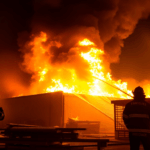Table of Contents
The urgent need for modernization
In an era where technology evolves at lightning speed, the U.S. air traffic control system remains stuck in the past, relying on outdated equipment and practices. Recent tragic incidents, including a midair collision that claimed 67 lives, have intensified calls for a comprehensive overhaul.
Transportation Secretary Sean Duffy has unveiled a multibillion-dollar proposal aimed at transforming this critical infrastructure, which currently manages over 45,000 flights daily. The plan is not just about upgrading technology; it’s about ensuring the safety of millions of passengers who trust the skies.
What the proposal entails
The ambitious plan outlines the construction of six new air traffic control centers and the implementation of cutting-edge technology across more than 4,600 locations nationwide. This includes replacing 618 outdated radar systems and enhancing communication capabilities with fiber, wireless, and satellite technologies.
Duffy likened the proposed upgrades to transitioning from a flip phone to a smartphone, emphasizing the need for modern tools to ensure efficient air traffic management.
Moreover, the initiative aims to standardize hardware and software across all facilities, which will streamline operations and reduce the risk of human error.
With a target completion date set for 2028, the urgency of this project cannot be overstated. Duffy has made it clear that the current system is “not worth saving,” highlighting the necessity for a complete overhaul rather than piecemeal fixes.
Funding and political support
While the House Transportation and Infrastructure Committee has allocated $12.5 billion for this initiative, Duffy warns that the final cost will likely exceed this estimate. U.S. Rep. Sam Graves has referred to the initial funding as merely a “down payment.” To expedite the process, Duffy urges Congress to provide upfront funding and streamline the permitting process, which has historically delayed infrastructure projects.
The proposal has garnered widespread support from various stakeholders in the aviation industry, including airline executives and labor unions. However, it’s crucial to note that this plan does not involve privatizing the air traffic control system, a contentious issue during Trump’s previous term. Instead, the focus remains on enhancing the existing framework to better serve the growing demands of air travel.
Challenges ahead
Despite the optimism surrounding the proposal, significant challenges lie ahead. The Federal Aviation Administration (FAA) must navigate the complexities of maintaining current operations while implementing a new system. This dual responsibility has led to a cautious approach in past upgrades, resulting in a slow evolution of the air traffic control infrastructure.
Moreover, the recent technical failures, such as the radar system breakdown at Newark Airport, underscore the urgent need for these upgrades. Without timely action, similar incidents could become more frequent, jeopardizing passenger safety and causing widespread disruptions in air travel.
As the aviation industry looks to the future, the proposed overhaul of the air traffic control system represents a critical step toward ensuring safer skies. With the right funding and political will, this ambitious vision could revolutionize air travel, making it not only safer but also more efficient for generations to come.





